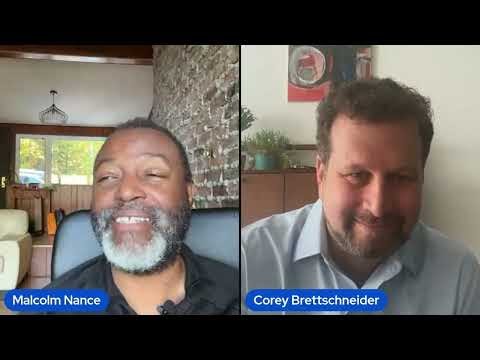
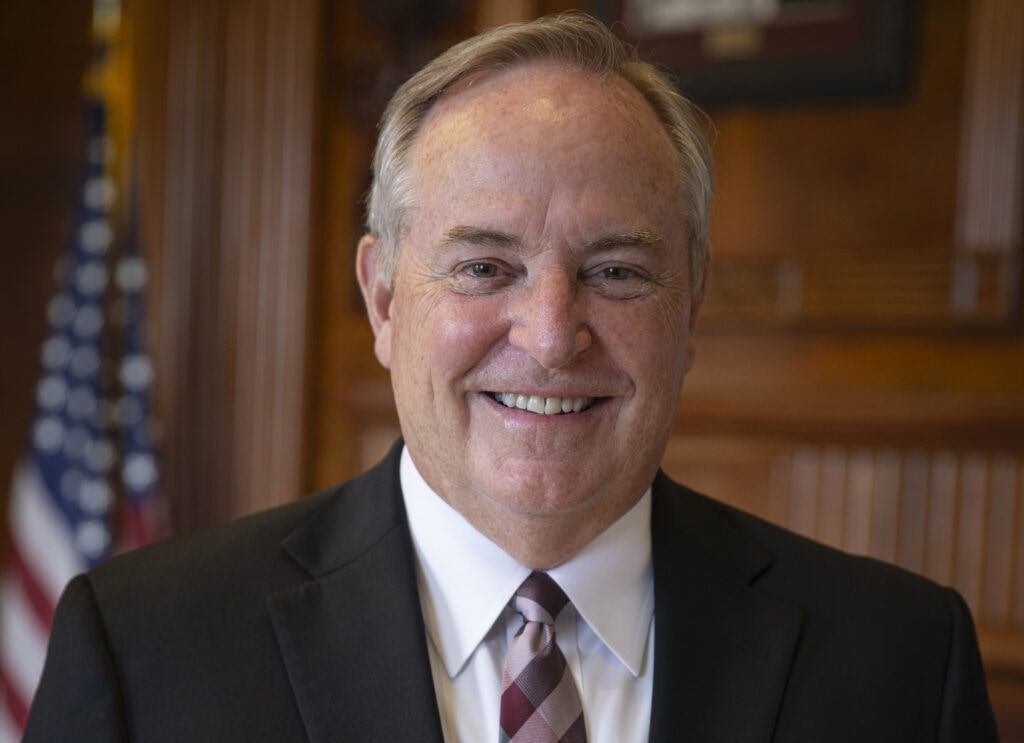
Welsh’s departure came just over a week after state Rep. Brian Harrison amplified a video on social media showing a student confronting Professor Melissa McCoul about course content. Despite initially defending McCoul’s academic freedom, Welsh terminated the professor the following day under pressure from Harrison and Lt. Gov. Dan Patrick.
The incident represents part of a broader Republican-led campaign to exert political control over university curricula, faculty hiring, and campus speech—efforts that education advocates warn are undermining the foundational principles of higher education.
Welsh’s tenure, which began in 2023, was marked by repeated clashes with state political leaders over diversity and inclusion initiatives. In January, Gov. Greg Abbott threatened Welsh’s position after the university’s business school planned to participate in a conference aimed at recruiting Black, Hispanic, and Indigenous graduate students. Under pressure, Welsh withdrew the university from the conference entirely.
The pattern reflects what faculty and higher education experts describe as an escalating assault on academic autonomy.
Despite strong support from faculty and students, Welsh’s position became untenable under sustained political attack. On last Wednesday, the university’s Executive Committee of Distinguished Professors—composed of 12 faculty members holding the institution’s highest academic honor—sent a letter urging regents to retain Welsh.
“All members of this Committee write this letter collectively to strongly urge you to retain President Mark Welsh in the wake of recent events,” the faculty letter stated.
Student leaders also rallied behind Welsh, with dozens of current and former student government representatives praising his “steadfast love and stewardship for our University” and expressing “faith and confidence in his leadership.”
However, these expressions of campus support proved insufficient against external political pressure.
Welch’s predecessor, M. Katherine Banks, had resigned following the botched hiring of journalism professor Kathleen McElroy, whose employment offer was undermined after regents expressed concerns about her work on diversity, equity, and inclusion.

Texas A&M University president Mark Welsh stepped down abruptly Thursday under mounting pressure from state lawmakers over how he handled a recent incident in which a student clashed with a professor over a lesson on gender identity, prompting him to dismiss the instructor.
Earlier this month, Welsh fired Melissa McCoul, who taught English, after a student taking her children’s literature class objected to the professor’s statement that there are more than two genders. Welsh also removed two administrators from their duties because they “approved plans to continue teaching course content that was not consistent” with the course’s description, he said.
The incident prompted fury from state lawmakers, some of whom called on the Texas A&M Board of Regents to terminate Welsh. But on Thursday, system officials announced he had resigned.
The case also raised serious questions about academic freedom at Texas A&M and prompted pushback from faculty members who argued that McCoul’s termination was unnecessary and unjust. The American Association of University Professors also released a statement arguing that the “firings set a dangerous new precedent for partisan interference in Texas higher education.”
Welsh’s resignation is effective Friday at 5 p.m., system officials noted in a statement.
“President Welsh is a man of honor who has led Texas A&M with selfless dedication. We are grateful for his service and contributions,” Texas A&M system chancellor Glenn Hegar, a former GOP lawmaker, said in a statement Thursday. “At the same time, we agree that now is the right moment to make a change and to position Texas A&M for continued excellence in the years ahead.”
Others took a victory lap, including Brian Harrison, a Republican lawmaker and Texas A&M alum who has accused the university of funding “leftist [diversity, equity and inclusion] and transgender indoctrination.”
Last week Harrison posted a video that the student had taken of her confrontation with McCoul, in which the student claims that teaching material related to gender identity and transgender people is illegal and violates one of President Trump’s executive orders, which are not laws. Harrison called for the board to fire Welsh and other senior officials.
“WE DID IT! TEXAS A&M PRESIDENT IS OUT!!” Harrison wrote on social media Thursday, adding that “as the first elected official to call for him to be fired, this news is welcome, although overdue.”
Several other Republican lawmakers also publicly expressed support for firing Welsh.
Welsh’s resignation comes despite the backing of notable faculty members, such as Texas A&M’s Executive Committee of the University Distinguished Professors, who wrote a letter of support for the president to the Board of Regents ahead of Thursday’s meeting.
Welsh, a four-star general who served as chief of staff of the U.S. Air Force, was previously dean of the Bush School of Government and Public Service before he was initially tapped as interim president in July 2023 when his predecessor, Kathy Banks, resigned following a hiring scandal. Welsh was named to the job on a permanent basis in December 2023.
Welsh’s exit now means the last two Texas A&M presidents have been felled by scandal and neither lasted more than two years in the job.
Texas A&M did not immediately name an interim upon announcing Welsh’s resignation, but system officials noted in a statement that it will appoint someone to the position “in the coming days” and “initiate a national search for a permanent president” following Welsh’s resignation.
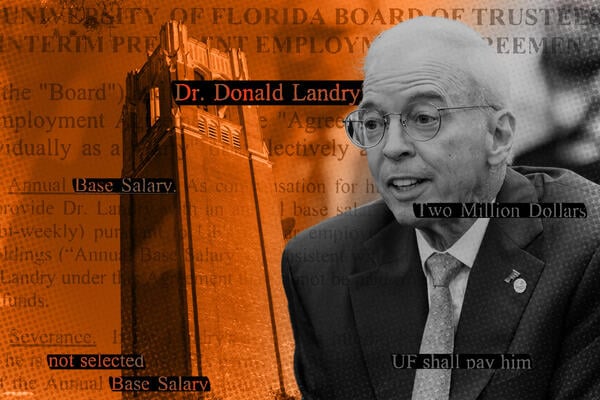
The Florida Board of Governors unanimously approved Donald Landry on Thursday as interim president of the University of Florida, three months after it rejected Santa Ono for the job in a split vote.
Landry, who has a lengthy academic résumé but has never been a college president, will now be among the top-paid campus leaders in the country, with a base salary of $2 million and the potential to earn an additional $500,000 in bonuses. But the one-year contract also includes an unusual caveat: Landry will earn $2 million in severance pay if he is not selected for the permanent job.
Such a guarantee is an anomaly for an interim president, one expert said.
Landry’s interview with the Board of Governors Thursday was much less contentious than Ono’s.
The board grilled Ono, who resigned as president of the University of Michigan to pursue the top job at UF, for almost three hours, mostly over his past support of diversity, equity and inclusion initiatives, which he sought to distance himself from ahead of the interview.
But on Thursday, it was clear from the outset that board members liked what they saw in Landry.
Prior to the vote, University of Florida Board of Trustees chair Mori Hosseini ticked off Landry’s accomplishments, noting he is a celebrated physician and academic. Hosseini also highlighted his various roles, such as chair emeritus of the Department of Medicine at Columbia University and president of the American Academy of Sciences and Letters, as well as his prior experience on the President’s Council on Bioethics during the George W. Bush administration, among other achievements.
“We are excited to see what UF can accomplish under his leadership,” Hosseini told the board.
The statewide Board of Governors also seemed excited about the candidate, approving his hire after an interview of around 30 minutes, which included more complimentary remarks from members praising Landry for his leadership in the health field and for filing an amicus brief supporting Florida and Texas officials in a Supreme Court case last year. In that brief, Landry argued against content moderation efforts on social media platforms, which he cast as censoring alternative perspectives and “suppressing dissent on a host of scientific questions.”
Paul Renner, a former Republican lawmaker and current gubernatorial candidate, told Landry, “In addition to your remarkable academic record, it strikes me as unique that I don’t know anyone else in academia that’s filed an amicus brief to the Supreme Court in defense of free speech.”
Renner also asked how Landry would defend free speech at UF.
Landry answered that beyond academic freedom and free speech, there “is a right to teach and a right to learn.” He said he would prevent disruptions to “the teaching functions of the university” by emphasizing time, place and manner restrictions “as significant as necessary but as small as possible” to balance free speech with UF’s mission. Landry also emphasized the importance of inculcating a culture of civility and the need for UF students and faculty to buy in.
At another point in the interview, Landry expressed concerns about “ideological pressure” to “not speak to certain topics,” specifically referring to climate change. He argued that climate activism has suppressed the free discussion of science, which Landry said “is not settled in that area.”
One expert noted that several parts of Landry’s contract stand out as unusual—starting with severance pay if he’s denied the permanent job in a year.
“I’ve never seen a guarantee of any type given to an interim,” said Judith Wilde, a research professor at George Mason University who studies presidential searches and contracts.
The salary itself is also quite substantial, especially for an interim president, she said. Ono was set to make around $3 million a year, which Wilde suspects the next permanent president will also get.
“Given the way that Santo Ono was treated in Florida, they may have been fearful that it would be difficult to get anybody to come. So they’ve advertised, in a sense, that they are still willing to give a big salary,” Wilde said. “Whoever steps into that job will probably get at least $3 million.”
Wilde also said that the key duties and responsibilities listed in Landry’s contract are highly prescriptive compared to other contracts, which don’t spell out specifics to the same level of detail. Among other duties, Landry is directed to appoint a permanent provost, fill interim dean positions and other vacant leadership roles, and “accelerate efforts” to encourage “Jewish students who feel threatened or harassed at other institutions to apply for admission.”
He is also instructed to “work with Florida and Federal [Department of Government Efficiency] to eliminate waste, fraud, and abuse”—a provision that has appeared in other presidential contracts. (While Ono’s contract also included that provision, it was less prescriptive over all.)
Several of the key duties and responsibilities, including certain hiring decisions, require the approval of UF’s board chair, which Wilde said would grant significant power to Hosseini.
“In essence, it makes him a co-president,” Wilde said.
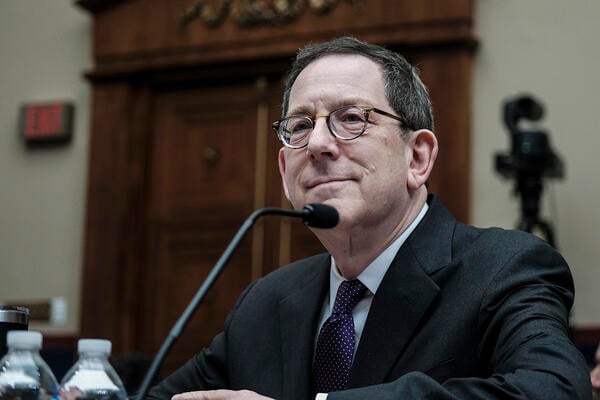
Schill has led the university since 2022.
Michael A. McCoy/Getty Images
Following more than a year of scrutiny from Republicans over how Northwestern University handled pro-Palestinian campus protests last year as well as a months-long federal funding freeze, President Michael Schill plans to step down.
Schill, who has been president since 2022, announced his departure Thursday.
“Over the past three years, it has been my profound honor to serve as president of Northwestern University,” Schill wrote in a message to the campus community. “In that time, our community has made significant progress while simultaneously facing extraordinary challenges. Together, we have made decisions that strengthened the institution and helped safeguard its future.”
Schill’s exit marks an end to a tumultuous tenure at Northwestern.
The wealthy private institution in Illinois has weathered attacks from congressional Republicans over a deal Schill struck with pro-Palestinian campus protesters who set up an encampment on university grounds. Congress hauled Schill in for a hearing on antisemitism in May 2024 over his agreement with the protesters. Schill agreed to provide more insight and input into university investment decisions, amid demands to divest from companies attached to the Israeli war effort. He also promised more support for Palestinian students and faculty, among other concessions.
(However, Northwestern has not provided the level of endowment transparency it promised.)
The president defended the deal before Congress. Schill, who appeared alongside the leaders of Rutgers University and the University of California, Los Angeles, was the main target for congressional Republicans, but he stood his ground—batting away hypothetical questions and refusing to discuss the conduct of individual faculty members.
Still, accusations that Northwestern mishandled antisemitism have continued to dog Schill since, and the Trump administration launched an investigation into alleged civil rights violations and later froze $790 million in federal research funding at the university, which led to deep job cuts this summer.
Schill and other Northwestern leaders said in July that they were working to restore the research funding and were “hopeful it will happen soon.”
Faculty members and other critics also raised concerns about actions taken by Northwestern under his leadership. Steven Thrasher, a journalism professor involved in pro-Palestinian protests on campus, alleged in March that Northwestern denied him tenure for his activism.
Schill also navigated turmoil in athletics when a whistleblower alleged in late 2002 that hazing was allowed to run unchecked in the football program. Schill briefly suspended and later fired Northwestern football coach Pat Fitzgerald and a subordinate. The coach sued Northwestern for wrongful termination in 2023; the two parties reached an undisclosed settlement last month.
“As I reflect on the progress we have made and what lies ahead, I believe now is the right time for new leadership to guide Northwestern into its next chapter,” Schill said Wednesday.
Schill will remain in his role until an interim president steps into the job.
Schill’s pending exit now means only one of seven campus leaders who were called to testify in congressional hearings on campus antisemitism in late 2023 and 2024 still has her job. Leaders at Harvard University, the University of Pennsylvania, Columbia University, UCLA, Rutgers and now Northwestern stepped down within a year of the hearings. (Then–UCLA chancellor Gene Block was already set to retire.) Only Sally Kornbluth at Massachusetts Institute of Technology remains in her job.
Rep. Elise Stefanik, a New York Republican, who emerged as one of the more aggressive inquisitors in prior campus antisemitism hearings, celebrated the news on social media.
“LONG overdue!” she wrote on X. “@NorthwesternUni President Michael Schill finally resigned today after he failed protect Jewish students, caved to the demands of the antisemitic, pro-Hamas mob on Northwestern’s campus, and failed to hold students who perpetuate antisemitic attacks accountable at an Education and the Workforce Committee hearing.”
The White House also welcomed Schill’s resignation in an emailed statement.
“The Trump Administration looks forward to working with the new leadership, and we hope they seize this opportunity to Make Northwestern Great Again,” spokesperson Liz Huston wrote.
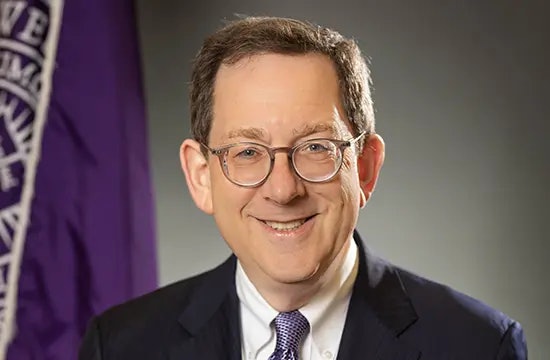
Northwestern University President Michael Schill announced his resignation Thursday, concluding a three-year tenure that brought record achievements alongside unprecedented federal challenges, including an ongoing $790 million funding freeze imposed by the Trump administration.
Schill, who became Northwestern’s 17th president in September 2022, cited the need for “new leadership to guide Northwestern into its next chapter” in his message to the campus community. His departure adds to a growing list of university presidents who have stepped down amid tensions with the federal government and campus controversies.
The resignation comes as Northwestern grapples with a federal funding freeze that began approximately four months ago, when the Trump administration halted $790 million in federal support. The action was reportedly connected to Title VI investigations, which examine discrimination in federally funded programs.
The frozen funds support what Northwestern describes as “innovative and life-saving research,” including development of the world’s smallest pacemaker and Alzheimer’s disease research. University officials warned that “this type of research is now at jeopardy” due to the funding suspension.
Northwestern joins other elite institutions facing similar federal actions, with universities like Cornell, Harvard, Columbia, and the University of Virginia experiencing funding freezes or leadership changes amid disputes over diversity programs and responses to Gaza-related campus protests.
During Schill’s tenure, Northwestern reached notable milestones while navigating significant challenges. Schill oversaw major academic initiatives, including the establishment of research centers like the Chan Zuckerberg Biohub Chicago and the NSF-Simons AI Institute for the Sky. He also championed free expression initiatives, launching the Litowitz Center for Enlightened Disagreement and establishing the President’s Advisory Committee on Free Expression and Institutional Speech.
However, his presidency was marked by significant controversies. Shortly after arriving on campus, Schill inherited a hazing scandal involving student-athletes, leading to new protective policies. More recently, he navigated campus tensions following the October 7, 2023, Hamas attack on Israel and subsequent protests.
Republican lawmakers, including House Education and Workforce Committee Chairwoman Elise Stefanik, had criticized Schill’s handling of campus antisemitism. Stefanik called his resignation “long overdue,” claiming he “failed to protect Jewish students” and “caved to the demands of the antisemitic, pro-Hamas mob.”
Northwestern officials counter that they have “fully cooperated with investigations by both the Department of Education and Congress” and implemented policy updates that resulted in a “dramatic decrease” in reported antisemitic incidents.
White House spokesperson Liz Huston said the Trump administration “looks forward to working with the new leadership, and we hope they seize this opportunity to Make Northwestern Great Again.”
The Northwestern Board of Trustees will name an interim president soon, with Schill continuing in his role until the transition is complete. Board Chair Peter Barris praised Schill’s leadership through “unparalleled challenges” and credited him with “lasting achievements that contribute robustly to Northwestern’s continued advancement.”
After stepping down, Schill plans to take a sabbatical before returning to teach and conduct research as a faculty member at Northwestern Pritzker School of Law.

As a college president, I see the promise of higher education fulfilled every day. Many students at my institution, Whittier College, are the first in their families to attend a university. Some are parents or military veterans who have already served in the workforce and are returning to school to gain new skills, widen their perspectives and improve their job prospects.
These students are the future of our communities. We will rely on them to fill critical roles in health care, education, science, entrepreneurship and public service. They are also the students who stand to lose the most under the proposed fiscal year 2026 federal budget, and those who were already bracing for impact from the “One Big Beautiful Bill” cuts, including to the health care coverage many of them count on.
The drive with which these extraordinary students — both traditionally college-aged and older — pursue their degrees, often while juggling caregiving commitments or other responsibilities, never fails to inspire me.
Related: Interested in innovations in higher education? Subscribe to our free biweekly higher education newsletter.
We do not yet know the precise contours of the spending provisions Congress will consider once funding from a continuing resolution expires at the end of September. Yet we expect they will take their cues from the president’s proposed budget, which slashes support for students and parents and especially hammers those already struggling to improve their lives by earning a college degree, with cuts to education, health and housing that could take effect as early as October 1.
That budget would mean lowering the maximum Pell Grant award from $7,395 to $5,710, reversing a decade of progress. For the nearly half of Whittier students who received Pell Grants last year, this rollback would profoundly jeopardize their chances of finishing school.
So would the proposal to severely restrict Federal Work-Study, which supports a third of Whittier students according to our most recent internal analysis, and to eliminate the Supplemental Educational Opportunity Grant, which more than 16 percent of our student body relies upon. In addition, this budget would impose a cap on Direct PLUS Loans for Parents, which would impact roughly 60 percent of our parent borrowers. It would also do away with the Direct PLUS Loans for Graduates program.
These programs are lifelines, not just for our students but for students all across the country. They fuel social mobility and prosperity by making education a force for advancement through personal work ethic rather than a way to rack up debt.
If enacted, these proposed cuts would gut the support system that has enabled millions of low-income students to earn a college degree.
Higher education is a bridge. To cross it and achieve their full potential, students from all walks of life must have access to the support and resources colleges provide, whether through partnerships with local high schools or with professional gateway programs in engineering, accounting, business, nursing, physical therapy and more. Yet, to access these invaluable programs, they must be enrolled. How will they reach such heights if they suddenly can’t afford to advance their studies?
The harm I’ve described doesn’t stop with cuts to financial aid, loans and services. Proposed reductions also target research funding for NASA, NIH and the National Science Foundation. One frozen NASA grant has already led to the loss of paid student research fellowships at Whittier, a setback not just in dollars but in momentum for students building real-world skills, networks and résumés.
These research opportunities often enable talented first-generation students to connect their classroom learning to career pathways, opening the door to graduate school, lab technician roles and futures in STEM fields. We’ve seen how federal funding has supported student projects in everything from climate data analysis to environmental health.
Stripping away support for hands-on research undermines the federal government’s own calls for colleges like ours to better prepare students for the workforce by dismantling the very mechanisms that make such preparation possible.
It’s particularly disheartening that these changes will disproportionately hurt those students who are working the hardest to achieve their objectives, who have done everything right and have the most to lose from this lack of investment in the future.
The preservation and strengthening of Pell, Work-Study, Supplemental Educational Opportunity grants and federal loan programs is not a partisan issue. It is a moral and economic imperative for a nation that has long been proud to be a land of opportunity.
Let’s build a system for strivers that opens doors instead of slamming them shut.
Let’s recommit to higher education as a public good. Today’s students are willing to work hard to deserve our continuing belief in them.
Kristine E. Dillon is the president of Whittier College in California.
Contact the opinion editor at [email protected].
This story about education cuts was produced by The Hechinger Report, a nonprofit, independent news organization focused on inequality and innovation in education. Sign up for Hechinger’s weekly newsletter.

Lake-Sumter State College named GOP lawmaker John R. Temple as its president Thursday, making him the latest politician to helm a state institution, the Orlando Business Journal reported.
Temple, an ally of Republican governor Ron DeSantis, breaks with many of his fellow politicians who have become college presidents in that he does have administrative experience in higher education. Temple was hired as the college’s associate vice president for workforce in 2023. Previously he was a teacher and administrator in K–12 schools.
Other recent political hires include former lieutenant governor Jeanette Nuñez at Florida International University, lobbyist and DeSantis ally Marva Johnson at Florida A&M University, and former education commissioner Manny Diaz Jr. in an interim role at the University of West Florida.
Multiple others have been hired across the state college system. A recent analysis by Inside Higher Ed found at least a dozen executive hires with ties to the Republican Party or DeSantis since 2022. Multiple others donated thousands of dollars to GOP candidates and causes.
Another state institution, North Florida College, is also considering a political candidate for its next president. Mike Prendergast, former Citrus County sheriff and chief of staff for Rick Scott, the Republican governor–turned–U.S. senator, is one of several finalists for the North Florida job.
The University of Florida also hired an interim president last week, tapping for the job Donald Landry, a former Columbia University Medical School administrator with ties to conservative academic organizations. Landry was hired after the Florida Board of Governors rejected former University of Michigan president Santa Ono for the UF job for his past support of diversity, equity and inclusion initiatives, which he sought to distance himself from amid his candidacy.
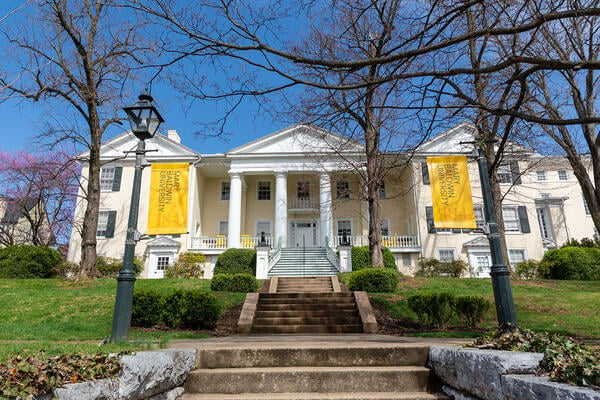
Jeff Stein was the first male president of Mary Baldwin University since 1976.
Liz Albro Photography/iStock/Getty Images
Mary Baldwin University president Jeff Stein resigned Tuesday after two years in the role, The News Leader reported. Fall classes at the formerly all-women private university in Staunton, Va., started Monday.
A university spokesperson told Inside Higher Ed that Stein resigned for personal reasons, and the university has not shared any other information about his departure.
Stein was the first male president at Mary Baldwin since 1976 and assumed the role in 2023 after former president Pamela Fox retired. The university’s Board of Trustees appointed Todd Telemeco, who was the vice president and dean of Mary Baldwin’s Murphy Deming College of Health Sciences, as Stein’s permanent replacement.
“We thank Dr. Stein and his wife, Chrissy, for their two years of service to the University, and we wish them the best in their future endeavors. We are especially grateful for Dr. Stein’s ability to reinvigorate the connection between the University and our alumni,” board co-chairs Eloise Chandler and Constance Dierickx wrote in a statement. “This renewed energy in alumni relations has also contributed to significantly higher alumni giving rates.”
Prior to becoming president at Mary Baldwin, Stein served as vice president for strategic initiatives and partnerships and an associate professor of English at Elon University in North Carolina.
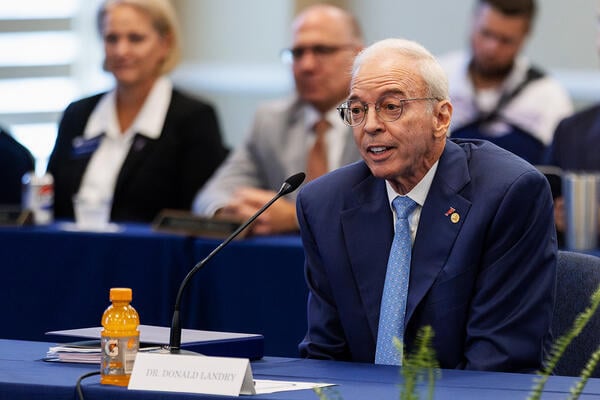
After months of uncertainty over who will lead the University of Florida, the Board of Trustees tapped Donald Landry as interim president in a unanimous vote at a meeting Monday morning.
Landry, chair emeritus of the Department of Medicine at Columbia University, will replace outgoing interim president Kent Fuchs, whose contract ends on Sept. 1. The appointment comes after the Florida Board of Governors rejected Santa Ono as UF’s next leader in June over his past support of diversity, equity and inclusion efforts, despite the university’s trustees approving the hire.
Landry, who is currently president of the American Academy of Sciences and Letters, will officially step into the job on Sept. 1, pending successful contract negotiations. Details of Landry’s contract have not been released, but Ono was set to make about $3 million annually.
The interim hire will still need to be approved by the state’s Board of Governors.
In a public hourlong interview during Monday’s board meeting, Landry promised that UF would be “neutral” under his leadership. However, he added a caveat.
“A neutral university, paradoxically, in this nation at the moment would be a conservative university. Not espousing conservative values, certainly not indoctrinating in conservatism,” Landry said. “We’d be neutral. We wouldn’t choose sides.”
Landry also criticized Columbia faculty and administrators for failing to respond to concerns about antisemitism amid pro-Palestinian student protests last year. Last month the university reached a settlement with the federal government that included sweeping reforms to academic programs, speech and disciplinary policies, as well as a $221 million payout.
“I saw things at Columbia that suggested an alignment between some faculty and students that I think encouraged the students to do things that were more reckless,” Landry told UF’s board.
At another point, when asked about DEI, he said when it “first emerged it was a bit vague what it actually meant” but “by the time it crystallized it was clear [DEI] had gone too far.” Landry added that he was thankful the “government has intervened and returned us to a rational meritocracy.”
Landry also cast himself as someone who resisted DEI at Columbia when it was “being implemented widely at every level, from the very top down to the smallest unit,” adding that “the Department of Medicine never wavered in its commitment to excellence” in his time there. Landry vowed to uphold state laws barring spending on DEI at Florida’s public institutions.
A physician by training, Landry has degrees from Lafayette College, Harvard University and Columbia’s College of Physicians and Surgeons. In 2008, President George W. Bush awarded Landry the Presidential Citizens Medal for his work on stem cell research, which used embryos that did not survive in vitro fertilization. Bush lauded Landry as a man of science and faith, crediting his approach to stem cell research. Landry was also on the President’s Council on Bioethics during the Bush administration.
Landry has also brought his scientific training to bear on other political debates. In early 2024, he filed a brief in a Supreme Court case in support of former Florida attorney general Ashley Moody and Texas attorney general Ken Paxton, who were sued by a technology trade group over laws passed in both states seeking to limit content moderation on social media platforms. Landry expressed concerns about censoring alternative perspectives, arguing that “the danger of censoring scientific dissent is painfully apparent from the conduct of social media platforms during the COVID-19 crisis,” which “reinforced prevailing opinion and allied government policy by suppressing dissent on a host of scientific questions.”
SCOTUS ultimately remanded the case to the lower courts.
Landry has also praised Jay Bhattacharya, director of the National Institutes of Health and an epidemiologist who was skeptical of the dangers of COVID-19 and prevention measures such as stay-at-home orders. Last year Landry said that Bhattacharya refused “to compromise his scientific findings,” thus risking “his own personal and professional self-interest, repeatedly, without hesitation, to take a stand for the public’s right to unrestricted scientific discussion and debate.”
UF Board of Trustees chair Mori Hosseini emphasized Landry’s scientific background in a news release announcing the hire, stating the new interim president “has shown exceptional leadership in academia and beyond, building programs with innovation, energy and integrity.”
Chris Rufo, the conservative anti-DEI activist who helped tank Ono’s chances at the UF presidency through an online campaign highlighting his past statements, praised the hire.
“Dr. Landry is a principled leader who will reverse ideological capture and restore truth-seeking within the institution. Kudos to the UF board of trustees on a great selection,” Rufo wrote on social media.
Alan Levine, a member of the Florida Board of Governors who voted against hiring Ono, also praised the selection in a post on X, calling Landry “an excellent choice” for the UF interim presidency.
Landry is expected to serve as interim president while UF begins a national search for its next leader. The university has been without a permanent president since former Republican senator Ben Sasse of Nebraska abruptly resigned from the job shortly before a spending scandal emerged.